At SC19, Gigabyte showed off a number of new servers based on the AMD EPYC 7002 series, with a twist. These were not simply servers designed to take advantage of high-density core counts as we saw in our recent Gigabyte H262-Z62 Review. Instead, these were a number of GPU servers. Some of them featured not just NVIDIA GPUs, but also AMD GPUs for AMD on AMD GPU compute platforms.
Gigabyte G482-Z51 PCIe Gen4 GPU Compute Server
At SC19, the Gigabyte G482-Z51 debuted as a 4U PCIe Gen4 GPU server. The system utilizes a triple xGMI instead of quad xGMI interconnect between two AMD EPYC 7002 series GPUs. As a result, it can handle 8x PCIe Gen4 GPUs.
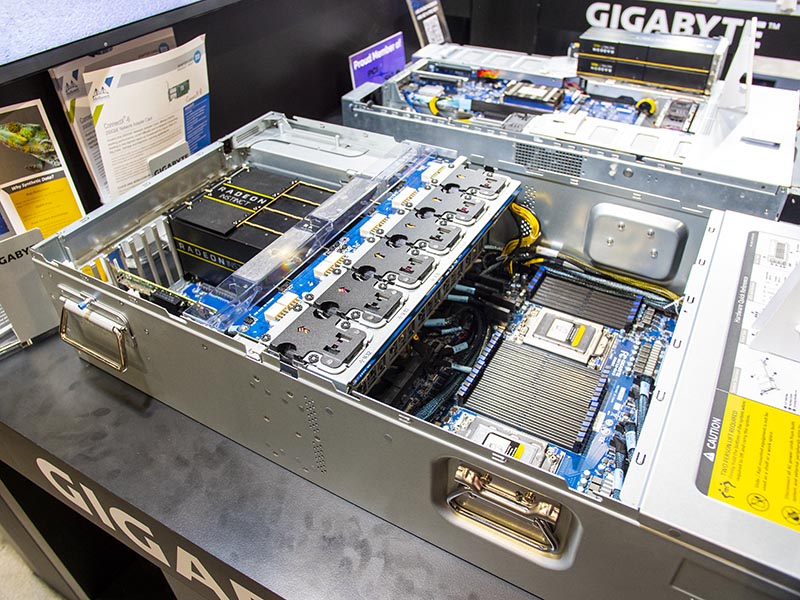
During the show, the company had Radeon Instinct MI50 PCIe Gen4 GPUs installed in the system to show what an AMD GPU on AMD CPU platform can offer. Intel and NVIDIA platforms are currently limited to PCIe Gen3 which runs at half speed. We have seen other PCIe Gen4 devices like the Graphcore C2 IPU accelerators and Mellanox ConnectX-6 at SC19 as well.
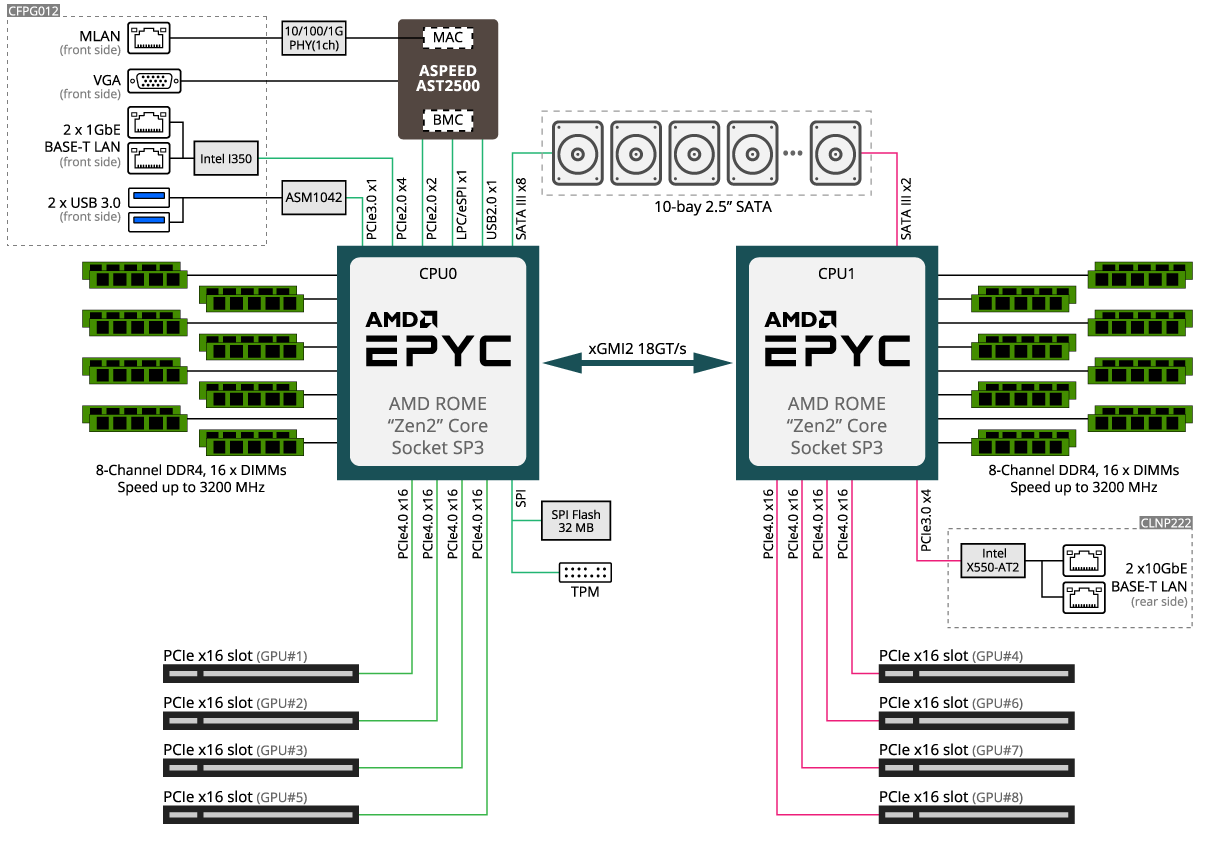
The system also has features like dual 10Gbase-T onboard so there is plenty of additional PCIe in the system even with 128x PCIe Gen4 lanes dedicated to GPUs.
Gigabyte G242-Z10 2U 1P 4x GPU Platform
This server is fascinating. It is a single socket AMD EPYC 7002 series system that we did not see in the initial Gigabtye SC19 press release. Instead, in the release, we saw the G241-G40 which is a very similar version of this but that requires dual Intel Xeon Scalable CPUs to operate.
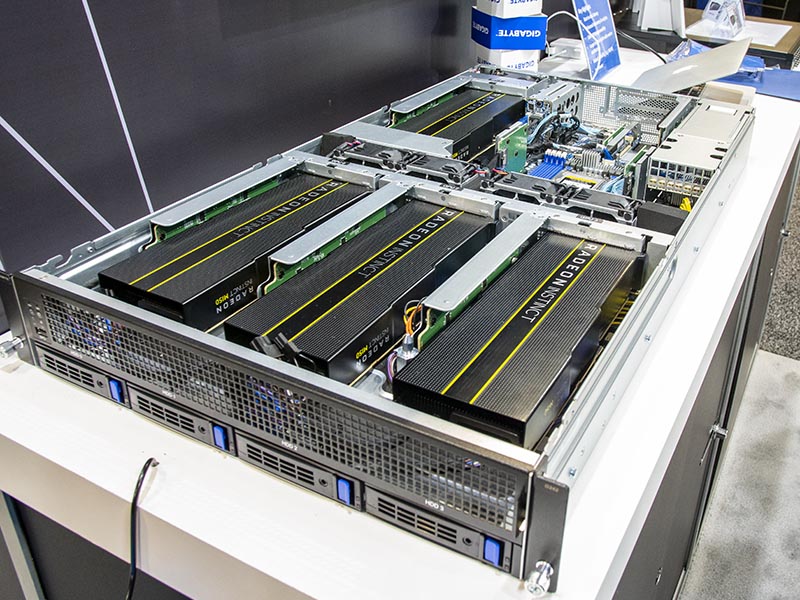
If you look closely at the above picture, you can see an Innovium TERALYNX based switch in the very top corner as a small bonus. Gigabyte is using a lot of disruptive technology in its stack.
Here is the block diagram for the Gigabyte G242-Z10. This shows off the PCIe expansion capability of the EPYC 7002 series. It also shows off how using even a low-cost AMD EPYC 7302P chip can replace two Xeon CPUs in a platform.
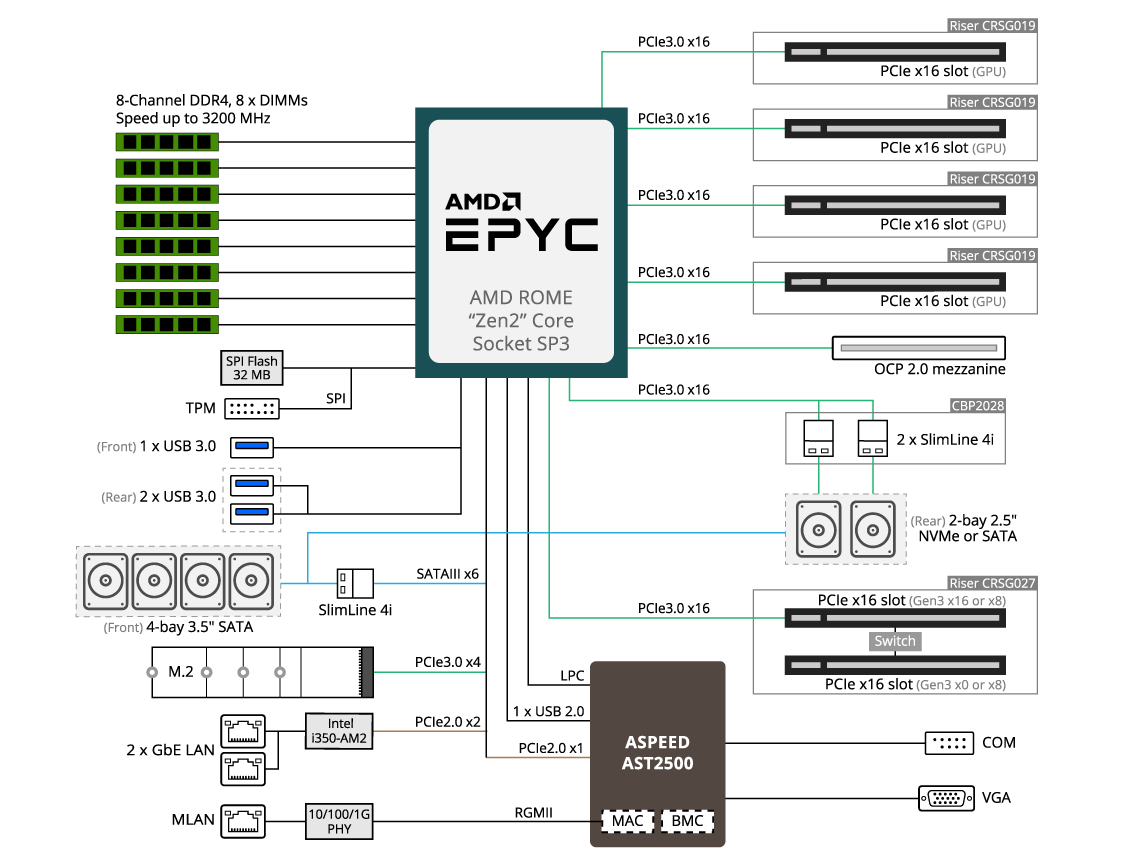
One of the very interesting notes about this platform is that it is designed to utilize either passive or actively cooled GPUs. If you had an application where you had blower-style GPUs such as what we saw in our NVIDIA Quadro RTX 8000 GPU Review, this is a platform that can handle actively cooled GPUs.
Honorable Mention: Gigabyte R281-T91 ThunderX2 GPU Compute Server
One of the big splashes at SC19 was NVIDIA CUDA on Arm Becoming a Reality. To make that a reality, the ecosystem needs a development platform. The Gigabyte R281-T91 is one of those platforms. It is based on the Marvell ThunderX2 and can house NVIDIA GPUs.
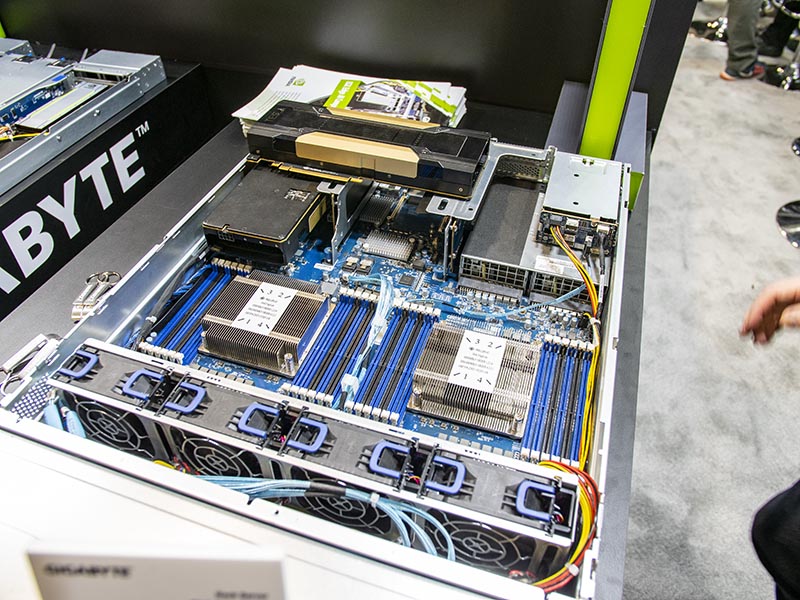
If you want to do Arm and CUDA development or try the beta, this is a different option than was shown at the NVIDIA keynote.
Final Words
It is great to see the new Gigabyte platforms. Gigabyte has been increasing its mechanical design quality with new features such as tool-less drive trays recently and moving to SP-X for management. The company is also taking a lot of daring design directions in servers bringing some class-leading platforms to market based on new CPU architectures. It is good for the market to have diversity in platforms. Having 1U and 2U AMD EPYC platforms is important, but having platforms designed for GPU compute adds more diversity to the EPYC ecosystem as well.

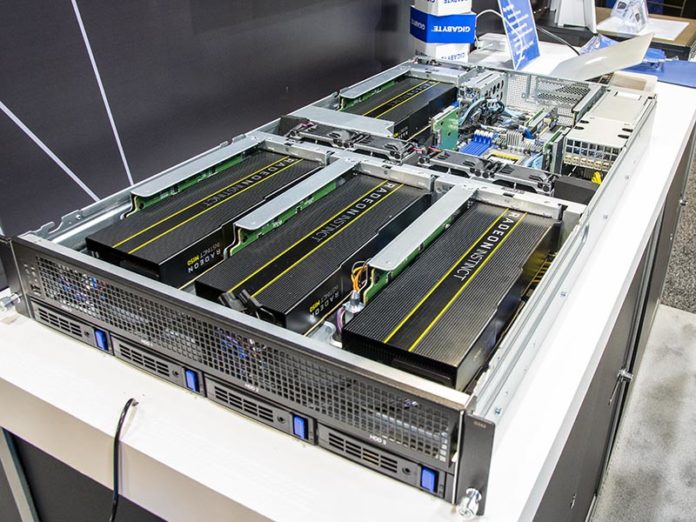



@STH: Do you have any insights into AMD’s current supply constraints (e.g. insuffcient wafer supply/orders, too few IO dies, etc.)?
Why would they be constrained? It’s Intel that sent an apology letter to vendors, that covers them with the Wall Street. AMD hasn’t issued any letter, and they haven’t updated guidance.
The only supply issue I can see from parts running out of stock might be related to binning. The best chips will go to the high margin server business, which will affect supply of desktop products. (Good problem to have)